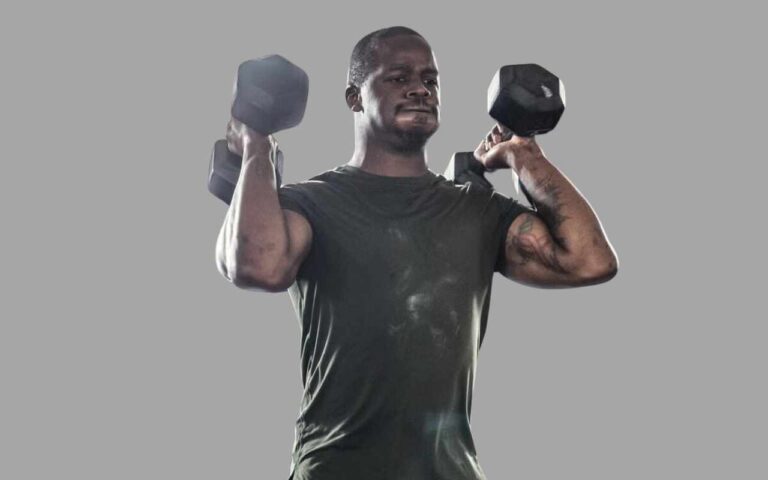The Importance of Functional Training: Enhancing Everyday Life
Functional Training: In the ever-evolving world of fitness, we often see new trends emerge and fade away. However, one approach that has gained lasting popularity is functional training. Unlike traditional workout routines that focus on isolated muscles or specific movements, functional training is all about improving the way we move in our everyday lives. Whether you’re carrying groceries, playing with your kids, or participating in sports, functional training prepares your body to handle these real-life challenges with ease.
What Is Functional Training?
Functional training focuses on exercises that mirror natural, everyday movements. Think about the activities you do daily—like bending down to pick something up, reaching for a high shelf, or even sitting down and standing up. Functional training prepares your body to handle these movements more efficiently and safely.
Functional training uses tools like body weight, resistance bands, kettlebells, and free weights to engage the entire body in dynamic movements, closely mimicking real-life activities.
Why Should You Care About Training?
You might be wondering, “Why should I choose functional training over a more traditional workout?” The answer lies in the real-world benefits it provides:
- It Makes Everyday Life Easier: The main goal of functional training is to help you move better in your daily life. Whether you’re lifting a heavy object, playing with your kids, or even getting out of bed in the morning, these exercises improve the strength and mobility you need for everyday tasks.
- It Helps Prevent Injuries: Because functional training focuses on balance, stability, and flexibility, it strengthens muscles in ways that help prevent injuries. It also trains your body to handle sudden movements, which can help you avoid strains or sprains when facing unexpected physical demands.
- It’s More Efficient: Training typically involves multiple muscle groups working together. This improves overall strength and coordination and burns more calories in less time compared to isolated exercises. You get more bang for your buck!
- It Can Improve Athletic Performance: For athletes, functional training mimics the complex movements required in sports. Whether running, jumping, or changing direction quickly, these exercises build the strength and coordination needed for peak performance.
- It’s Accessible to Everyone: Whether you’re new to exercise or a seasoned athlete, functional training can be tailored to your fitness level. The movements can be modified or intensified as you progress, ensuring you continue to challenge your body safely.
Core Principles of Functional Training
To truly understand functional training, it’s important to look at some of its core principles:
- Focus on Movement, Not Just Muscles: Unlike workouts that target one muscle at a time (like a bicep curl), functional training emphasizes whole-body movements like squatting, lunging, pushing, pulling, and twisting. These movements reflect how you use your body in real life.
- Core Strength is Essential: At the heart of functional training is a strong core—not just your abs, but the muscles around your spine and pelvis. A strong core improves your posture, balance, and stability, making it easier to move and protect yourself from injury.
- Balance and Stability are Key: Many functional exercises require you to stabilize yourself while moving, helping to improve balance and coordination. This is especially useful for older adults or anyone looking to enhance overall stability.
- Flexibility and Mobility Matter: Functional training improves your flexibility and range of motion, making your muscles and joints more resilient and less prone to injury. It helps you move more freely and comfortably throughout your day.
Functional Training in Action: Popular Exercises
Here are some common functional exercises you might see in a typical workout:
- Squats: A squat mimics sitting down and standing up, engaging your legs, back, and core. It’s a perfect way to build strength for everyday activities like getting in and out of a chair or picking something off the floor.
- Lunges: Lunges are excellent for building leg strength and improving balance. They’re also useful for actions like climbing stairs or stepping over obstacles.
- Deadlifts: The deadlift is a powerful exercise that trains you to lift heavy objects safely by engaging your legs, back, and core. This movement is highly functional for tasks like lifting boxes or grocery bags.
- Push-ups: Push-ups work your chest, shoulders, arms, and core, building upper-body strength. Whether you’re pushing open a heavy door or moving furniture, this exercise is incredibly practical.
- Planks: Planks are one of the best exercises for core strength. A strong core is essential for maintaining good posture, whether you’re sitting, standing, or lifting.
- Kettlebell Swings: This dynamic exercise works the entire body while boosting cardiovascular fitness. It mirrors movements like bending and lifting.
- Farmer’s Carry: This movement mimics carrying heavy bags or groceries. It strengthens your grip, core, and legs—perfect for day-to-day tasks.
How to Start Functional Training
The great thing about functional training is that you can start at any level. If you’re a beginner, you can stick with body-weight exercises and focus on mastering your form. As you get stronger, you can add weights or more challenging variations to keep progressing.
Here’s a sample functional training routine to get you started:
- Warm-up: Begin with light cardio or dynamic stretching to loosen up your muscles and get your blood flowing.
- Main Workout:
- Squats: 3 sets of 10-15 reps
- Lunges: 3 sets of 10-12 reps (each leg)
- Push-ups: 3 sets of 10-15 reps
- Planks: Hold for 30-60 seconds
- Kettlebell Swings: 3 sets of 12-15 reps
- Cool-down: Finish with static stretches to improve flexibility and help your muscles recover.
Final Thoughts
The training is all about making you stronger, more mobile, and better prepared for the physical demands of everyday life. Whether you want to move more efficiently, prevent injuries, or simply improve your overall health, functional training offers an accessible, practical, and highly effective way to achieve your fitness goals.








One Comment